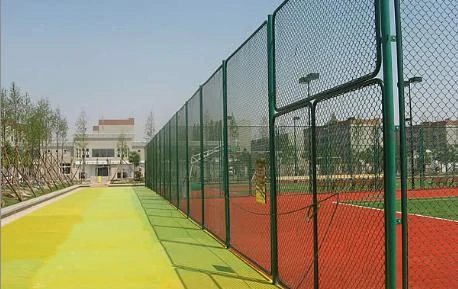 TEL:
+86-13102802206
TEL:
+86-13102802206
 Email:
fencenetting@china.com
Email:
fencenetting@china.com
 Language
Language
 TEL:
+86-13102802206
TEL:
+86-13102802206
 Email:
fencenetting@china.com
Email:
fencenetting@china.com
 Language
Language


The Symbolism of a Strand of Barbed Wire
Barbed wire, a simple yet powerful invention, has become a symbol of division, confinement, and, ironically, of safety. A single strand of barbed wire can evoke a multitude of emotions and reflections, often reminding us of more profound issues—freedom, security, and the boundaries we establish in our lives.
Historically, barbed wire was invented in the late 19th century, primarily to manage livestock and delineate property lines. Its purpose was straightforward to keep animals from straying and to mark boundaries. However, as the technology evolved, so did its applications. Barbed wire was soon adopted for military use, securing camps and inhibiting enemy movement. This duality of purpose—safeguarding while simultaneously entrapment—has shaped its reputation over the decades.
A single strand of barbed wire encapsulates the essence of confinement. Picture a solitary wire stretched taut, its sharp barbs glistening in the sunlight. Such an image can represent the restrictions we impose on ourselves and those imposed by society. It serves as a visceral reminder of the barriers between the self and the others—boundaries that can protect but also imprison. In literature and art, barbed wire often reflects themes of struggle and tension. Writers and artists have drawn parallels between their personal experiences of entrapment and the physical manifestation of these wires, weaving a narrative of conflict and resolution.

In the context of modern society, a strand of barbed wire also symbolizes the growing divisions among people. With increasing discussions around immigration, social justice, and global conflicts, barbed wire has become a poignant representation of the physical and metaphorical walls we erect. Crossings between nations and communities are fraught with challenges, often marked by barriers meant to keep out the other. The sentiments surrounding these divisions ripple through communities, resulting in fear, misunderstanding, and, at times, hostility. The simple yet powerful image of barbed wire stands as a reminder of these shared conflicts, inviting us to question the necessity and consequences of such boundaries.
Yet, amidst the dark connotations, there is a contrasting narrative to explore. Barbed wire can also signify safety and protection. In many cases, it shields vulnerable spaces—homes, borders, and institutions—from threats. It stands guard at places where individuals seek refuge, creating a dichotomy between safety and exclusion. The very strand that can isolate and confine can also serve to protect, leading to a complex interplay of feelings surrounding the notion of security in an increasingly unpredictable world.
Ultimately, a strand of barbed wire is more than just a physical object—it is a representation of human experiences and societal structures. Whether it stands for confinement, protection, division, or safety, it prompts us to reflect on our own boundaries and the implications of what it means to draw lines—both literal and metaphorical. In scrutinizing this strand, we find ourselves engaging with larger questions about the nature of our relationships, the safety we crave, and the freedoms we often take for granted.
In conclusion, the symbolism of a strand of barbed wire challenges us to think critically about the boundaries we create in our lives. It urges us to find a balance between safety and openness, confinement and freedom. Perhaps the greatest lesson that a single strand of barbed wire teaches us is that boundaries, while sometimes necessary, must be navigated with care, compassion, and an understanding of their broader implications on humanity.